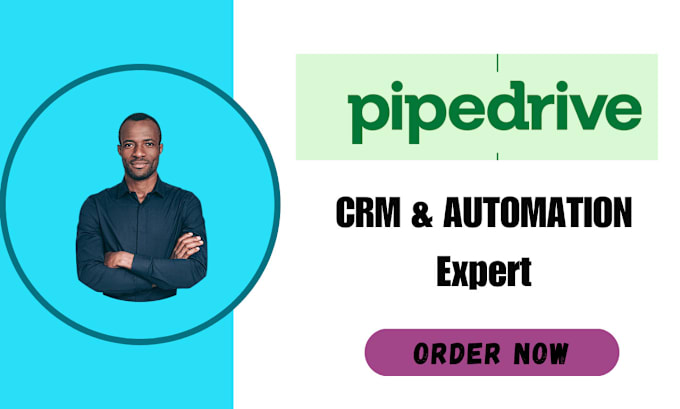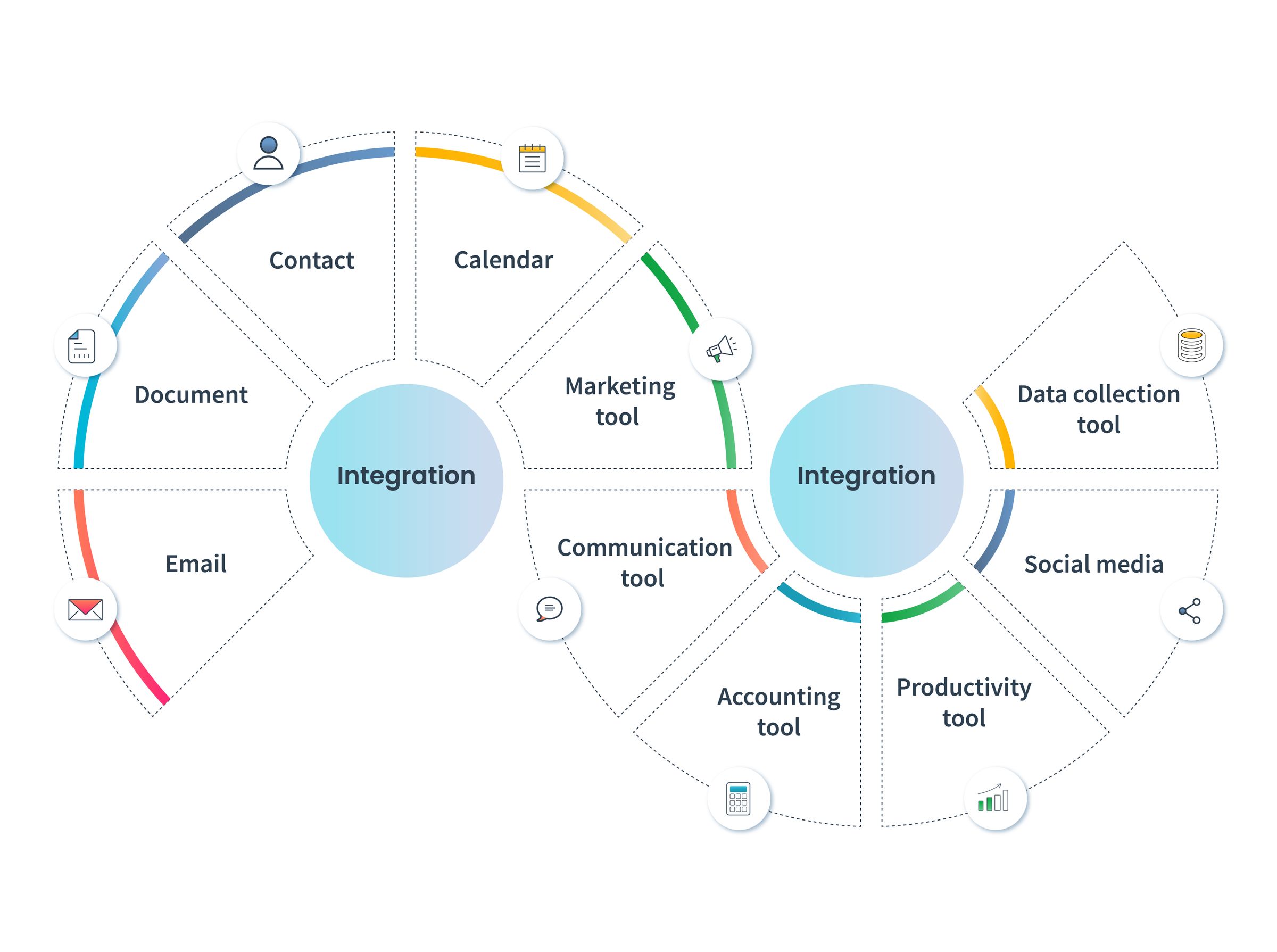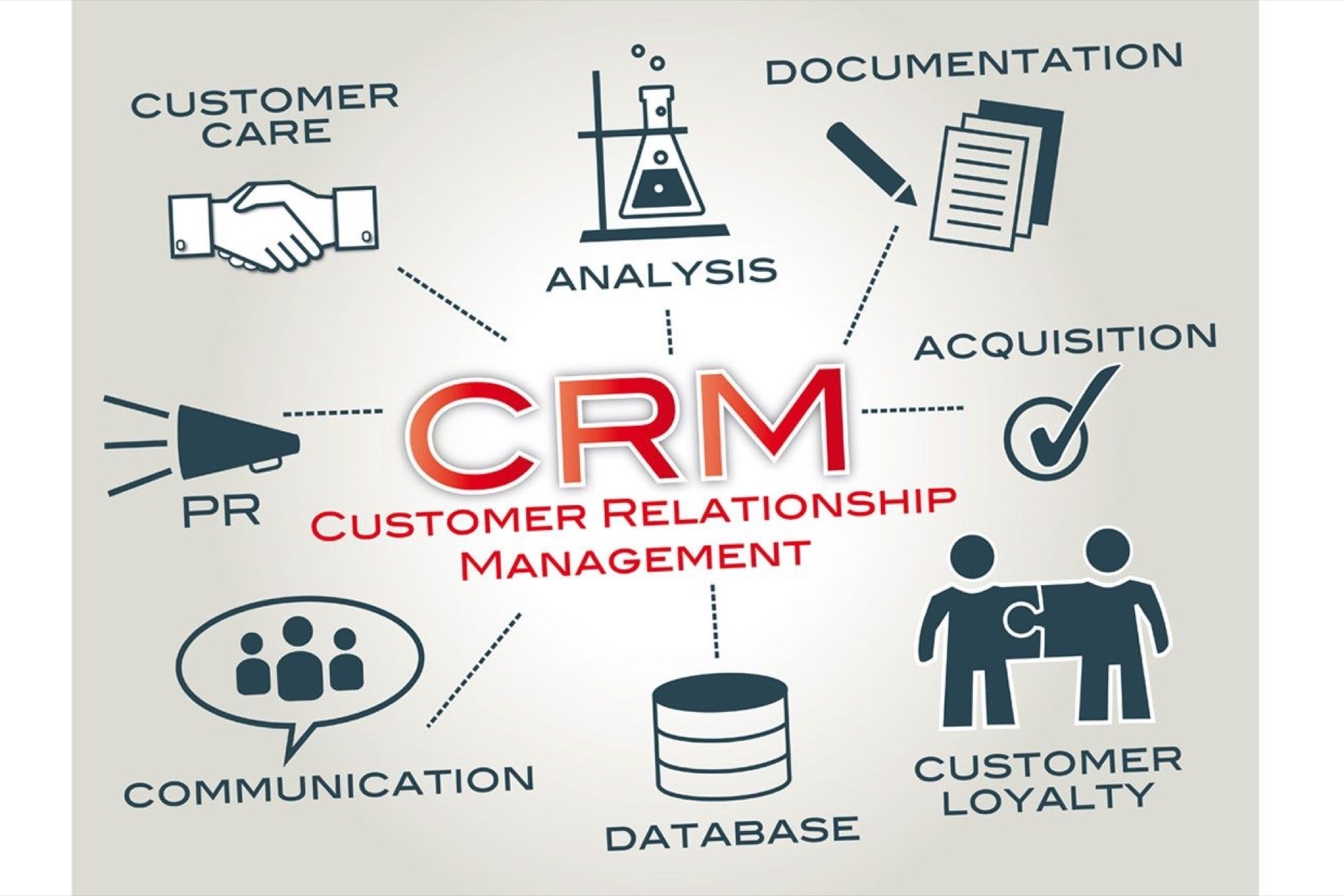
Unlocking the Power of CRM: Why Integration Matters with Pipedrive
In the fast-paced world of sales, efficiency and organization are your secret weapons. That’s where Customer Relationship Management (CRM) systems come in. Think of them as the central nervous system of your sales operation, keeping track of every interaction, lead, and deal. And when you integrate your CRM, specifically Pipedrive, with other vital tools, you’re essentially giving your sales team superpowers. This article dives deep into the world of CRM integration with Pipedrive, exploring its benefits, how to do it effectively, and the tools you’ll need to succeed. We’ll go beyond the basics, providing actionable insights and real-world examples to help you transform your sales process and achieve remarkable results.
What is CRM Integration and Why is it Crucial for Pipedrive Users?
CRM integration is the process of connecting your CRM system, in this case, Pipedrive, with other software applications you use daily. These applications can range from email marketing platforms and project management tools to accounting software and communication channels. The goal is to create a seamless flow of data, eliminating manual data entry, reducing errors, and providing a unified view of your customer interactions.
For Pipedrive users, integration is particularly crucial. Pipedrive is a powerful sales CRM, but its true potential is unleashed when it’s connected to the other tools your team relies on. Imagine a world where:
- Lead information automatically syncs from your website forms directly into Pipedrive.
- Emails are automatically logged against the relevant deals and contacts.
- You can trigger automated workflows based on deal stages, sending personalized follow-up messages or assigning tasks to team members.
- Sales reports are automatically updated with data from your accounting software.
This is the power of CRM integration. It streamlines your workflow, saves time, reduces errors, and provides a 360-degree view of your customers, empowering your sales team to close more deals and build stronger relationships.
Benefits of Integrating Pipedrive with Other Tools
The advantages of integrating Pipedrive are numerous and impactful, touching various aspects of your sales operations. Here’s a closer look at some of the key benefits:
Improved Efficiency and Productivity
Integration automates repetitive tasks, freeing up your sales team’s time to focus on what matters most: building relationships and closing deals. No more manual data entry, copying and pasting information between systems, or searching for the latest updates. This leads to significant gains in productivity, allowing your team to handle more leads and close more deals.
Enhanced Data Accuracy
Manual data entry is prone to errors. Integration ensures that data is automatically and accurately transferred between systems, reducing the risk of mistakes and ensuring that your sales team is working with the most up-to-date information. This is crucial for making informed decisions and providing excellent customer service.
Better Customer Insights
By integrating Pipedrive with other tools, you gain a holistic view of your customers. You can see their interactions with your website, track their email engagement, monitor their purchase history, and understand their communication preferences. This comprehensive understanding allows you to personalize your sales efforts, provide better customer service, and build stronger relationships.
Streamlined Workflows
Integration allows you to create automated workflows that trigger actions based on specific events. For example, you can automatically send a follow-up email when a lead completes a form on your website or assign a task to a sales rep when a deal reaches a certain stage. This streamlines your sales process, ensuring that no leads or opportunities fall through the cracks.
Increased Sales and Revenue
Ultimately, the goal of CRM integration is to increase sales and revenue. By improving efficiency, enhancing data accuracy, providing better customer insights, and streamlining workflows, integration empowers your sales team to close more deals and generate more revenue. This is the bottom-line benefit that makes CRM integration a worthwhile investment.
Key Tools and Applications for Pipedrive Integration
Pipedrive is designed to integrate seamlessly with a wide range of tools and applications. Here are some of the most popular and useful integrations:
Email Marketing Platforms
Integrating Pipedrive with email marketing platforms like Mailchimp, Constant Contact, or ActiveCampaign allows you to:
- Automatically sync contacts and leads between Pipedrive and your email marketing lists.
- Track email engagement, such as opens and clicks, within Pipedrive.
- Trigger automated email campaigns based on deal stages or other criteria.
- Personalize your email marketing efforts with data from Pipedrive.
This integration helps you nurture leads, engage customers, and drive sales through targeted email campaigns.
Project Management Tools
Integrating Pipedrive with project management tools like Asana, Trello, or Monday.com allows you to:
- Create project tasks automatically when a deal is won.
- Track project progress within Pipedrive.
- Share project updates with your sales team.
- Ensure that projects are aligned with sales goals.
This integration helps you manage projects effectively, ensuring that deals are closed and projects are completed on time.
Accounting Software
Integrating Pipedrive with accounting software like QuickBooks or Xero allows you to:
- Automatically sync customer data between Pipedrive and your accounting system.
- Track invoices and payments within Pipedrive.
- Generate sales reports that include financial data.
- Gain a complete view of your sales performance, including revenue and profitability.
This integration helps you manage your finances effectively and make informed business decisions.
Communication Platforms
Integrating Pipedrive with communication platforms like Slack or Microsoft Teams allows you to:
- Receive real-time notifications about deal updates and other important events.
- Share information with your team quickly and easily.
- Collaborate on sales opportunities more effectively.
This integration improves communication and collaboration within your sales team, leading to better results.
Website Forms and Lead Capture
Integrating Pipedrive with website forms and lead capture tools like Gravity Forms or Typeform allows you to:
- Automatically capture lead information from your website forms.
- Create new deals and contacts in Pipedrive automatically.
- Segment leads based on their responses to your forms.
- Streamline your lead generation process.
This integration helps you capture leads efficiently and nurture them through the sales pipeline.
Other Useful Integrations
Beyond the tools mentioned above, Pipedrive offers integrations with a wide range of other applications, including:
- Calendars: Google Calendar, Outlook Calendar
- Document Management: Google Drive, Dropbox
- VoIP and Phone Systems: RingCentral, Aircall
- E-commerce Platforms: Shopify, WooCommerce
The possibilities are vast. The key is to identify the tools that are most important to your sales process and integrate them with Pipedrive to maximize efficiency and effectiveness.
Step-by-Step Guide to Integrating Pipedrive with Other Tools
Integrating Pipedrive with other tools is generally a straightforward process, but the specific steps will vary depending on the tools you’re integrating. Here’s a general guide to help you get started:
1. Identify the Tools You Want to Integrate
The first step is to determine which tools you want to connect to Pipedrive. Consider your sales process, the tools your team uses, and the data you need to share between systems. Prioritize the integrations that will have the biggest impact on your sales performance.
2. Choose an Integration Method
There are several ways to integrate Pipedrive with other tools:
- Native Integrations: Pipedrive offers native integrations with many popular tools. These integrations are typically easy to set up and require no coding.
- Zapier: Zapier is a popular automation platform that allows you to connect Pipedrive with thousands of other apps. It uses “Zaps,” which are automated workflows that trigger actions in one app based on events in another.
- API Integration: For more complex integrations, you can use Pipedrive’s API to build custom integrations. This requires coding knowledge.
- Integration Apps from the Pipedrive Marketplace: Pipedrive has a marketplace where you can find many pre-built integrations with third-party tools.
Choose the integration method that best suits your technical skills and the complexity of the integration you need.
3. Connect Your Accounts
Once you’ve chosen an integration method, you’ll need to connect your Pipedrive account with the other tool you’re integrating. This typically involves entering your account credentials or authorizing the integration through an authentication process.
4. Configure the Integration
After connecting your accounts, you’ll need to configure the integration. This involves setting up the data mapping, which determines how data will be transferred between systems. For example, you might map the “Name” field in your lead capture form to the “Name” field in Pipedrive.
5. Test the Integration
Before you start using the integration, it’s important to test it to ensure that it’s working correctly. Create a test lead or deal and see if the data is being transferred between systems as expected.
6. Monitor and Optimize
Once the integration is live, monitor its performance and make adjustments as needed. You may need to tweak the data mapping or workflow settings to optimize the integration for your specific needs. Regularly review the integration to ensure that it’s still meeting your needs and that the data flow is accurate and efficient.
Best Practices for Successful Pipedrive Integration
To get the most out of your Pipedrive integrations, follow these best practices:
Plan Your Integrations Carefully
Before you start integrating, take the time to plan your integrations. Identify your goals, choose the right tools, and map out the data flow. A well-planned integration will be more effective and efficient.
Start Small and Scale Up
Don’t try to integrate everything at once. Start with a few key integrations and gradually add more as you become more comfortable with the process. This will help you avoid overwhelming your team and ensure that your integrations are successful.
Keep Your Data Clean
Before you integrate, make sure your data is clean and accurate. This will ensure that the data flowing between systems is reliable and useful. Regularly review and update your data to maintain its accuracy.
Train Your Team
Make sure your team is trained on how to use the integrations. Explain the benefits of the integrations, demonstrate how they work, and provide ongoing support. A well-trained team will be more likely to adopt the integrations and use them effectively.
Monitor Your Integrations
Regularly monitor your integrations to ensure that they’re working correctly. Check for errors, data inconsistencies, and other issues. Make adjustments as needed to keep your integrations running smoothly.
Review and Optimize Regularly
Your business needs and your sales process evolve. Regularly review your integrations to ensure that they’re still meeting your needs. Optimize your integrations as needed to improve their efficiency and effectiveness.
Troubleshooting Common Pipedrive Integration Issues
Even with careful planning and execution, you may encounter issues with your Pipedrive integrations. Here are some common problems and how to troubleshoot them:
Data Synchronization Issues
If data isn’t syncing correctly between Pipedrive and other tools, check the following:
- Account Credentials: Ensure that your account credentials are correct and that the integration has the necessary permissions.
- Data Mapping: Verify that the data mapping is set up correctly and that the fields are mapped to the correct values.
- API Limits: Some integrations may have API limits that can affect data synchronization. Check the documentation for the specific integration to see if there are any limitations.
- Connectivity Issues: Make sure that your internet connection is stable and that there are no network issues that could be interfering with data synchronization.
Workflow Problems
If your automated workflows aren’t working as expected, check the following:
- Triggers: Verify that the triggers are set up correctly and that they’re firing when they should.
- Actions: Ensure that the actions are set up correctly and that they’re executing as expected.
- Conditional Logic: If you’re using conditional logic, make sure that the conditions are set up correctly and that they’re evaluating as expected.
Error Messages
If you receive error messages, read them carefully and try to understand the cause of the problem. The error message may provide clues about what went wrong. Consult the documentation for the specific integration or contact the support team for assistance.
Real-World Examples of Successful Pipedrive Integrations
To illustrate the power of Pipedrive integration, let’s look at some real-world examples:
Example 1: Lead Generation and Qualification
A marketing agency integrates Pipedrive with their website forms and email marketing platform. When a visitor fills out a form on their website, their information is automatically added as a new lead in Pipedrive. Based on the information provided in the form, the lead is automatically assigned to the appropriate sales rep and tagged with relevant information. The sales rep receives a notification in Slack and can immediately follow up with the lead. The email marketing platform is then used to nurture the lead with targeted email campaigns, and the engagement data is tracked within Pipedrive. This streamlined process ensures that no leads are missed and that the sales team can quickly qualify and convert leads into customers.
Example 2: Sales and Project Management
A software development company integrates Pipedrive with their project management tool, Asana. When a deal is won in Pipedrive, a new project is automatically created in Asana, and the relevant project tasks are assigned to the appropriate team members. The sales team can easily track the progress of the project within Pipedrive, and the project team can access the customer information and deal details. This integration ensures that projects are aligned with sales goals and that the sales team and the project team are working together effectively.
Example 3: E-commerce and Sales Tracking
An e-commerce business integrates Pipedrive with their Shopify store. When a customer makes a purchase on their website, a new deal is automatically created in Pipedrive, and the customer information and purchase details are added. The sales team can track the customer’s purchase history and use this information to personalize their sales efforts. They can also trigger automated follow-up emails based on the customer’s purchase behavior. This integration allows the business to provide a seamless customer experience and increase sales.
The Future of Pipedrive Integration
The future of Pipedrive integration is bright. As technology continues to evolve, we can expect to see even more sophisticated integrations that will automate more tasks, provide deeper insights, and empower sales teams to achieve even greater results. Some trends to watch include:
- Artificial Intelligence (AI): AI-powered integrations will be able to analyze data, identify patterns, and provide predictive insights.
- Machine Learning (ML): ML will be used to automate more complex tasks and personalize sales efforts.
- No-Code/Low-Code Integration Platforms: These platforms will make it even easier for users to integrate Pipedrive with other tools, without requiring any coding knowledge.
- More Native Integrations: Pipedrive will continue to expand its library of native integrations, making it easier for users to connect with the tools they use every day.
The key to staying ahead of the curve is to embrace new technologies and explore the possibilities of integration. By leveraging the power of Pipedrive integration, you can transform your sales process, increase your efficiency, and achieve remarkable results.
Conclusion: Supercharge Your Sales with Pipedrive Integration
CRM integration with Pipedrive is no longer a luxury; it’s a necessity for any sales team striving for peak performance. By connecting Pipedrive with the right tools, you can streamline your workflow, gain valuable customer insights, and ultimately, close more deals. From automating tedious tasks to providing a 360-degree view of your customers, the benefits are undeniable. Embrace the power of integration, and watch your sales team transform into a high-performing machine.
Don’t just take our word for it. Start exploring the possibilities of Pipedrive integration today. Identify the tools that will have the biggest impact on your sales process, choose the right integration method, and start building your sales superpowers. The future of sales is integrated, and Pipedrive is the key to unlocking its potential.

